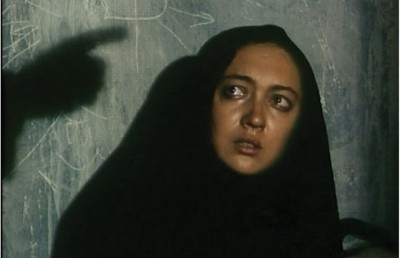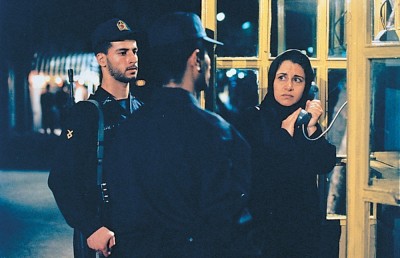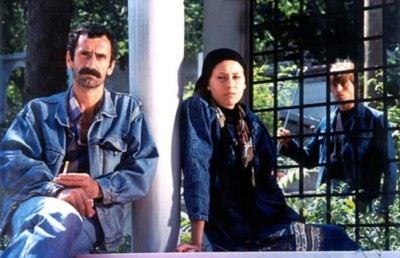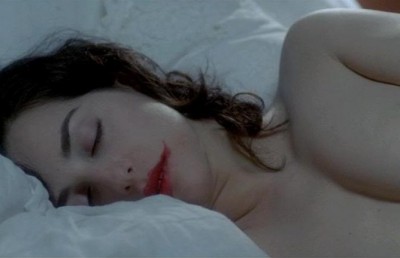Women United: Sentenced to Marriage and Highway Courtesans
Socially Committed Documentary
Two recent documentaries distributed by Women Make Movies deal with the hardships faced by women who impose their will against rigid patriarchal law and social custom: Sentenced to Marriage (Israel, 2004 Anat Zuria) and Highway Courtesans (India, 2005, Mystelle Brabbee). Sentenced to Marriage is like an Israeli version of the remarkable documentary by British documentarian Kim Longinotto and Iranian anthropologist Ziba Mir-Hosseini, Divorce Iranian Style (1998), which followed the trials and tribulations of three Iranian women attempting to get a divorce in Iran. In Sentenced to Marriage director Anat Zuria also focuses on three women, Tamara, a mother and young artist, Michelle, a mother of three, and Rachel, a mother of four who works as a producer at a religious radio station, as they go up against the equally (compared with Iranian Shari`a law ) patriarchal Rabbinical law. Through an opening title card the film informs us that in the state of Israel there is no separation between state and religion and that since 1953 matters of divorce can only be decided upon by the Rabbinical courts (Rabbinate), not civil law. Under such a law a divorce can only be granted when the husband agrees to it willingly. A hint of what these women are up against is suggested with the film’s opening title card, a quote from an ancient legal text which states, “A woman is bought in three ways and buys herself in two ways. She is bought with money, with wit and with intercourse and buys herself with divorce and with the death of the husband.”
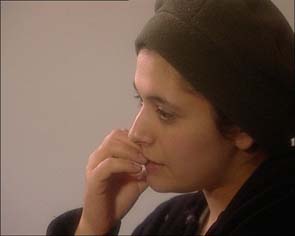
The film begins proper with a sleight of hand: happy wedding images of a woman, Tamara, and her husband (whose image is blurred to maintain anonymity). Flashforward a few years to Tamara meeting with a female Rabbinical pleader, Reut, in preparation for her divorce hearing. Tamara is a young, sweet woman who, we will soon learn, is less of a battler than the other two women the film follows, Michelle, who has the benefit of a combative mother who is not afraid to raise her voice to right a perceived wrong, and Rachel, who surprises the viewer with a cathartic tirade in the film’s emotional climax. While Michelle and Rachel seem to have boundless energy and patience in dealing with the labyrinth like Rabbinical law, Tamara seems spent after years of fruitless legal battle, preferring to work on her art rather than continue fighting the fight.
While intercutting between the respective trials of the three women one thing becomes clear: the social and legal cards are stacked against the women. While the women work to support their children without any child support from the father, and wait years for the divorce that will liberate themselves to start a new life, the husbands live with other women, even bearing their children, and prolong the divorce hearings by disregarding official court appointments and legal protocol. In some cases the husband’s resistance to divorce is merely a ploy to get the wife to ‘pay’ a fee which the courts deem just compensation for the husband’s perceived ‘losses.’ The little that we hear from the actual court trial reveals the judge’s obvious bias toward the male clients. For example, in Tamara’s trial we hear her tell the judge that, based on her first hand evidence of his conduct around their children, she fears for the safety of the children when they are in the presence of their father, and that he ‘forced’ himself on her sexually. The judge disregards Tamara’s claims with the flippant statement that she did not understand that the husband’s actions were meant “only to exploit the woman’s innocence.”
As the above description hints at, unlike the filmmakers of Divorce Iranian Style, who were allowed to film inside the Iranian courts, director Zuria was not able to actually film inside the courtrooms. But Zuria cleverly uses this restriction as an aesthetic merit making the form serve to underscore the content. For example, unable to film within the court, Zuria moves her restless hand held camera along the narrow court corridors, while we hear an audio account of the court proceedings. The effect of hearing the disembodied male voices of the domineering judge and, at times, husband, serves to reinforce the omnipotence of patriarchal power. This male ‘invisibility’ is maintained visually as well, since when we do get the rare appearance of a man on screen, his face is either electronically blurred, or he is filmed from a distance and from behind. While the subject itself is always engaging, it is nice to see Zuria confident enough with her medium to at times express meaning entirely through form, like (along with the above descriptions) the night time long shot of Tamara alone in her apartment, framed inside cell-like window bars –a striking visual metaphor for how she (and the other two women) are ‘imprisoned’ by Rabbinical law. Another moment of subtle visual brilliance occurs during Tamara’s visit to her outgoing friend Dikla, who has a reproduction of Da Vinci’s “Mona Lisa” (or “La Giaconda,” as it is properly called) hanging on her living room wall. The two women move into the living room and Dikla turns on a light which illuminates the painting. The women look at the painting and the shot cuts to a close-up of Mona Lisa’s infamous grin, which gains in meta-textual meaning within the film’s feminist context. The shot cuts back to a close shot of Tamara, echoing the painting with her own sly grin, who then says to her offscreen friend, “The original is much smaller.”
Regardless of perceived notions of ‘objectivity’ or ‘non-narrative’ form, almost all documentaries contain moments of heightened drama, what documentary theorists refer to –quoting the great photographer Henri Cartier-Bresson– as the ‘decisive moment.’ In Sentenced to Marriage it is when the normally cool and calm Rachel looses her temper during her divorce hearing after her husband says, “I’m not going to give you a divorce.” Rachel storms out of the court yelling and screaming at anyone willing to listen to her anti-judicial tirade (which includes such striking assaults as, “I don’t believe in this religion anymore,” and “Don’t bother with the court, it is useless.”). After a brief single shot scene where we see that Tamara has returned to art school, we cut to a scene of the same Rachel, only now sporting an ear to ear grin, entering her lawyer’s office with her Rabbinical pleader, who proudly introduces Rachel as the “newest divorcee….Mazal tov!” As a viewer we wonder, what could have transpired between the scene of Rachel’s outburst and this one to have gained Rachel her divorce? Has the film purposely left us in the dark about the inner machinations of this case? Surprisingly, both the pleader and the female lawyer admit that they don’t really know why the divorce was granted to Rachel. They suggest luck and Divine Providence, but we will never know. In hindsight, what seemed like a moment of madness –Rachel’s outburst– may in fact have been of a calculated gesture to stir the courts out of their complacency.
The film achieves resolution where the three women are concerned: Michelle gets her divorce (after a four year wait), as does Rachel (after a five year wait), while the court ruling for Tamara is no divorce and a measly 800 shekel a month of child support (roughly 200 Canadian dollars). The final scene of Sentenced to Marriage recalls the opening wedding ceremony. After a heartfelt scene in which Tamara’s pleader tries to convince her to continue her struggle for independence, Tamara is seen alone in her room using one of her wedding photographs as subject for her next art project. It is an ironic conclusion, with Tamara –perhaps a surrogate for the filmmaker– literally transforming her tribulations into her art.
While Sentenced to Marriage deals with urban women, Highway Courtesans turns its attention to the rural Bachara community of Central India, where young women are coerced through the pressures of long standing social and economic custom to work as prostitutes to support their family. Highway Courtesans begins ironically with footage from a black and white Bollywood production number which romanticizes the palace courtesan who dances for the maharajah’s pleasure, before sinking the viewer into the harsher realities of the courtesan experience of the Bachara community. Director Mystelle Brabbee’s stylistically straightforward (compared to Sentenced to Marriage) documentary charts the interconnected lives of three young women who have been ‘forced’ by their patriarchal family members to work the highway as prostitutes. As stated in the film, this income forms “the core of the local economy,” and positions the men in the family as socially sanctioned pimps (a female social worker refers to the film’s central father figure Ratan Lal as a mix of “professional pimp and Bachara male”). Although this tradition of the eldest daughter placed to work as a prostitute to support the family is centuries old, it has been eliminated in all but a few places in India today, with the Bachara community one of the last strangleholds of this archaic tradition.
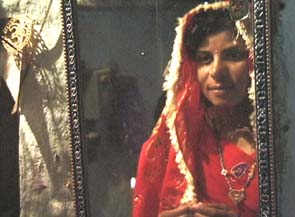
Nine years in the making, Highway Courtesans follows the destiny of 16 year old Guddi Chauhan, a pretty, hopeful, and bright young lady, her younger sister Shana, and their carefree neighbor, Sungita. All of these women will become ‘highway courtesans.’ For the women of this community there are two choices in life: marriage or prostitution (education is a third choice but rare, as seen in this film when the father first agrees to send his youngest daughter away to school but then, three years later, we learn that she never went to school). Director Brabbee is not afraid to broach tricky and personal issues, asking the women personal questions about how they feel when with their ‘clients,’ how they feel toward their family, condom use, and the risk of AIDS.
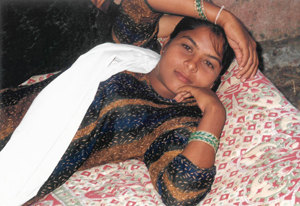
Like Sentenced to Marriage, a source of one of the film’s most dramatic moments occurs when human anger explodes on camera. In Highway Courtesans the burst of anger comes from Guddi’s boyfriend, who comes up with all manner of reason to renege on his commitment of marriage (his reasons include, because he does not have a good enough job, because he is not ‘good enough’ for her, and because of Guddi’s sexual past, etc.). Guddi gets the misguided idea that if she confronts him on camera it will make him speak the truth and maybe propose marriage. The plan backfires, and instead we get to see an ugly side of him as he turns on Guddi and threatens her physically.

Although much of the sheer brute force when it comes to social power rests in the hands of Guddi’s shifty father and her alcoholic, abusive brother Kamal (who self-servingly disapproves of a potential suitor for Guddi because he is of ‘lower caste’), it is Guddi’s steely resolve and understated rebellion that manifests the film’s real strength. The film charts Guddi’s maturation from a naïve 16 year old, who we first see in the back of a car with her sisters, giggling in anticipation of meeting a potential suitor, to a weathered yet determined 23 year old woman. Through her seven year growth we get to learn of the real pain and suffering Guddi –and by extension many other women– experienced. We learn that she tried to poison herself and that she is unable to bear children (the reason for this is not stated, but one can assume it was a side effect of the physical ‘rigors’ of her work). However, Guddi demonstrates remarkable resolve and resilience. Instead of succumbing to the physical and emotional pressures around her, Guddi responds pro-actively, joining and becoming an important member of a local activist group called Action Aid, which educates women of the Bachara community on health and social issues. As the ultimate form of moral character, Guddi defies her father and brothers to leave the streets for a poorer paying local job as schoolteacher. After all her hardships, at the film’s end Guddi appears calm and at peace with herself. Her job pays very little (500 Indian rupees, or about 12 Canadian dollars), but she is content. She appears wise beyond her years, claiming that she has learned not to “love blindly,” and that she will “investigate the next man…if there is one.” Guddi’s final words are for her family. She reinforces the bond she feels for them; however, in what can only be a calculated, and perhaps symbolic, omission, the only family members she cites are her ‘sisters’: “I love my sisters very much. I know we will always be together.”
In Sentenced to Marriage and Highway Courtesans women of vastly different social, cultural, racial and economic background similarily suffer hardship under unjust and archaic patriarchal social custom and law. Neither film lessens the pain these women feel, or attempts to gloss over the complexities of their respective social realities. However, the approach taken by both filmmakers is to foreground the good that can come from the strength of character of the participants, no matter how difficult or long the struggle.
All photos taken from the official website of Highway Courtesans and the Women Make Movies website.



